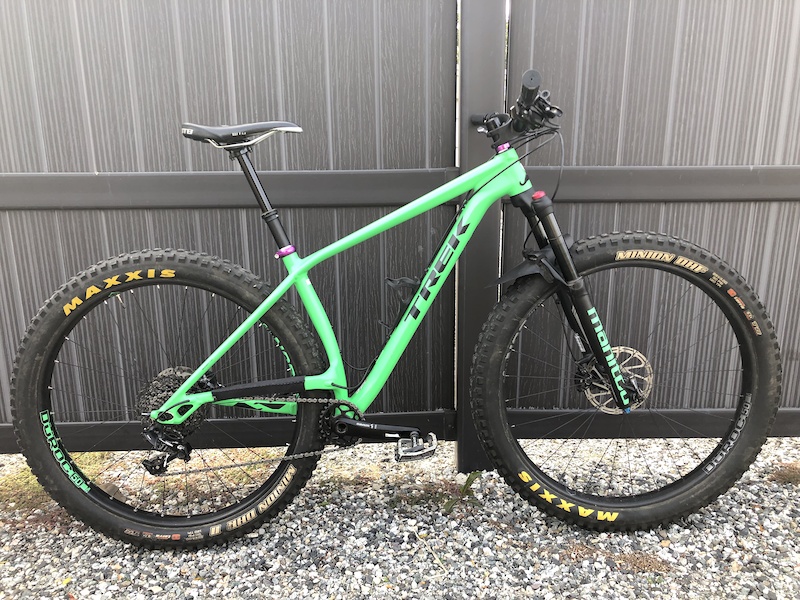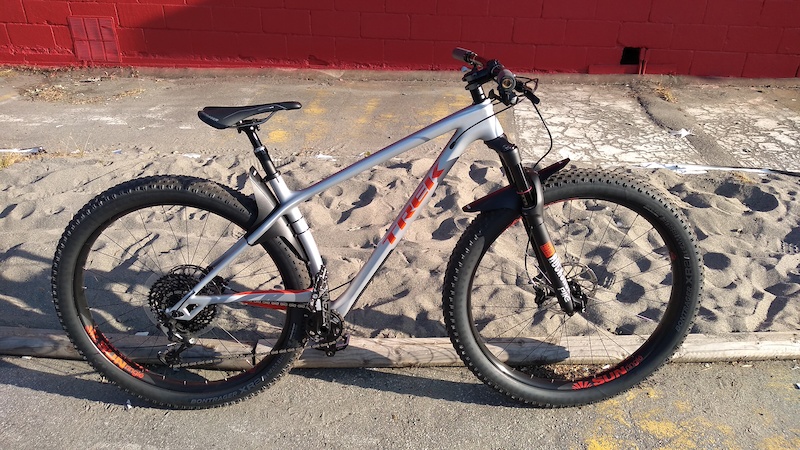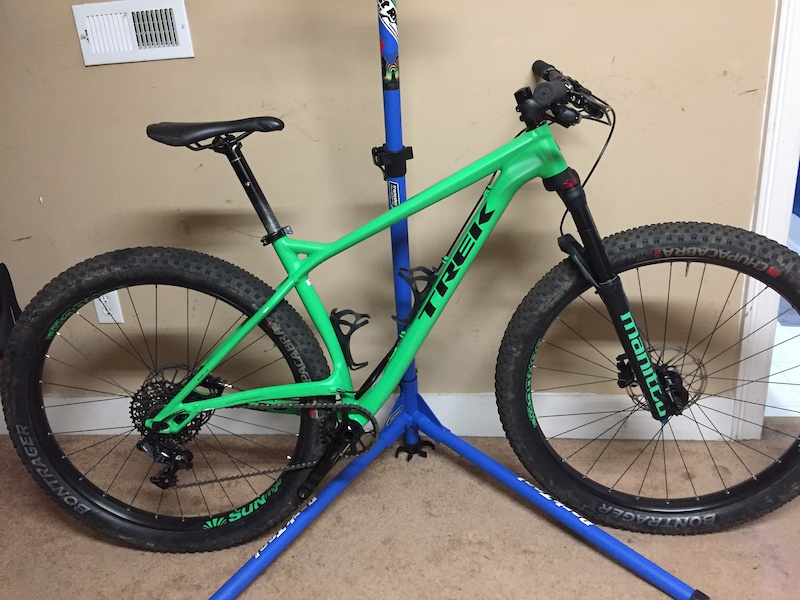
The rims are tubeless ready, as are the tires, and include cutouts to keep weight in check. The Stache 9 is delivered with single wall Sun Mule Füt rims laced to DT Swiss 350 Boost hubs. Rebound is externally controlled from the bottom of the right leg. This adjustment dials in the last 15mm of the stroke to prevent smashing thorough the last bit of travel. Manitou also included the Hydraulic Bottom Out (HBO) adjustment found elsewhere in its line. This allows the rider to set platform for climbing and trail riding and, when needed, turn the low-speed compression lever to the full open position for aggressive down-hilling and rough terrain. Compression adjustments are composed of separate high and low speed circuits, with the former adjusting the latter while in the firmer modes. Air volume of the positive side of the spring can be adjusted by removing the top cap and moving preinstalled spacers up or down on the shaft of the cap to dial in spring curve, very similar to bottomless tokens from Rockshox or air volume spacers from Fox and Push. The left leg features the Dorado air system, a dual chamber air spring inflated from a single Schrader valve on the bottom of the left leg. The lowers retain the reverse arch design of other Manitou offerings. It uses a similar hollow crown to support sturdy 34mm stanchions, but the pitch of the crown-the distance between the legs-is increased to accommodate plus-sized tires and 110mm Boost spacing at the dropouts. Manitou’s new Magnum fork is loosely based on the single crown Mattoc. The frame has space for two water bottles in the usual configuration of seat and down tube. Moving forward, the Stache keeps things low in the front with a 100mm head tube (size 17.5 frame) holding a Manitou Magnum Pro fork in place.

All this leaves no room for a front derailleur, so the Stache is 1x only. This gives extra strength and more clearance around the hefty 29x3.0 Bontrager Chupacabra tires that come stock on the bike. The pressfit-style BB92 bottom bracket shell and the first 4 inches of the left stay are forged as one piece. Even there, Trek has a trick up its sleeve. But only on the drive side-the left stay attaches in the traditional position.

Yes, you read that right: an elevated chainstay. To get a rear center as short as was wanted, and to stay with a normally sized bottom bracket shell, Trek anchored the drive side chainstay above the bottom bracket. They hold the rear wheel solidly in place with a 12mm thru-axle. It also features a remarkably tight wheelbase, which is adjustable thanks to sliding dropouts that Trek calls Stranglehold.

New from the ground up, the Stache frame takes full advantage of Boost 148, the wider spacing of the rear dropouts and realigning of the chainline that Trek and SRAM brought into play last summer.


 0 kommentar(er)
0 kommentar(er)
